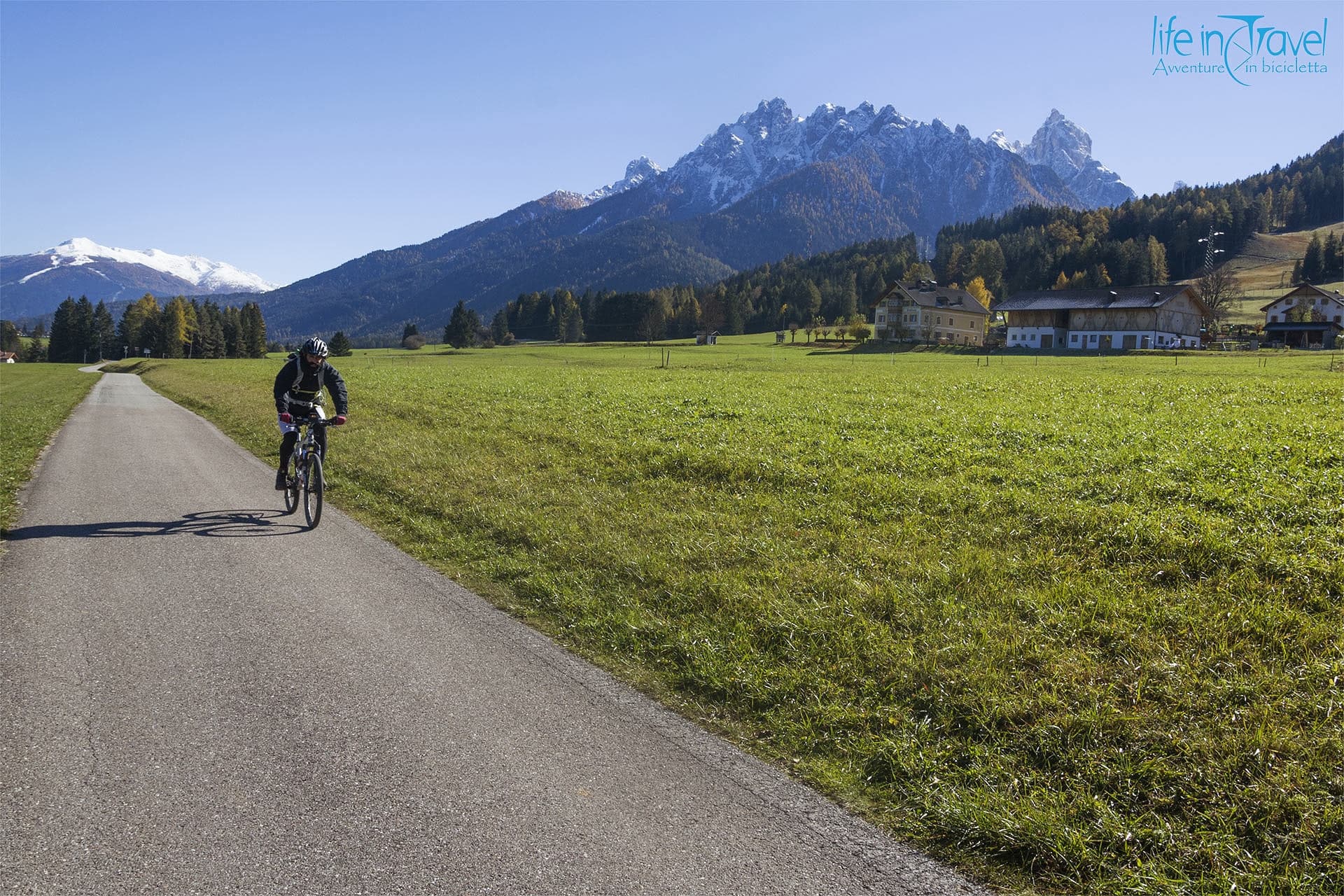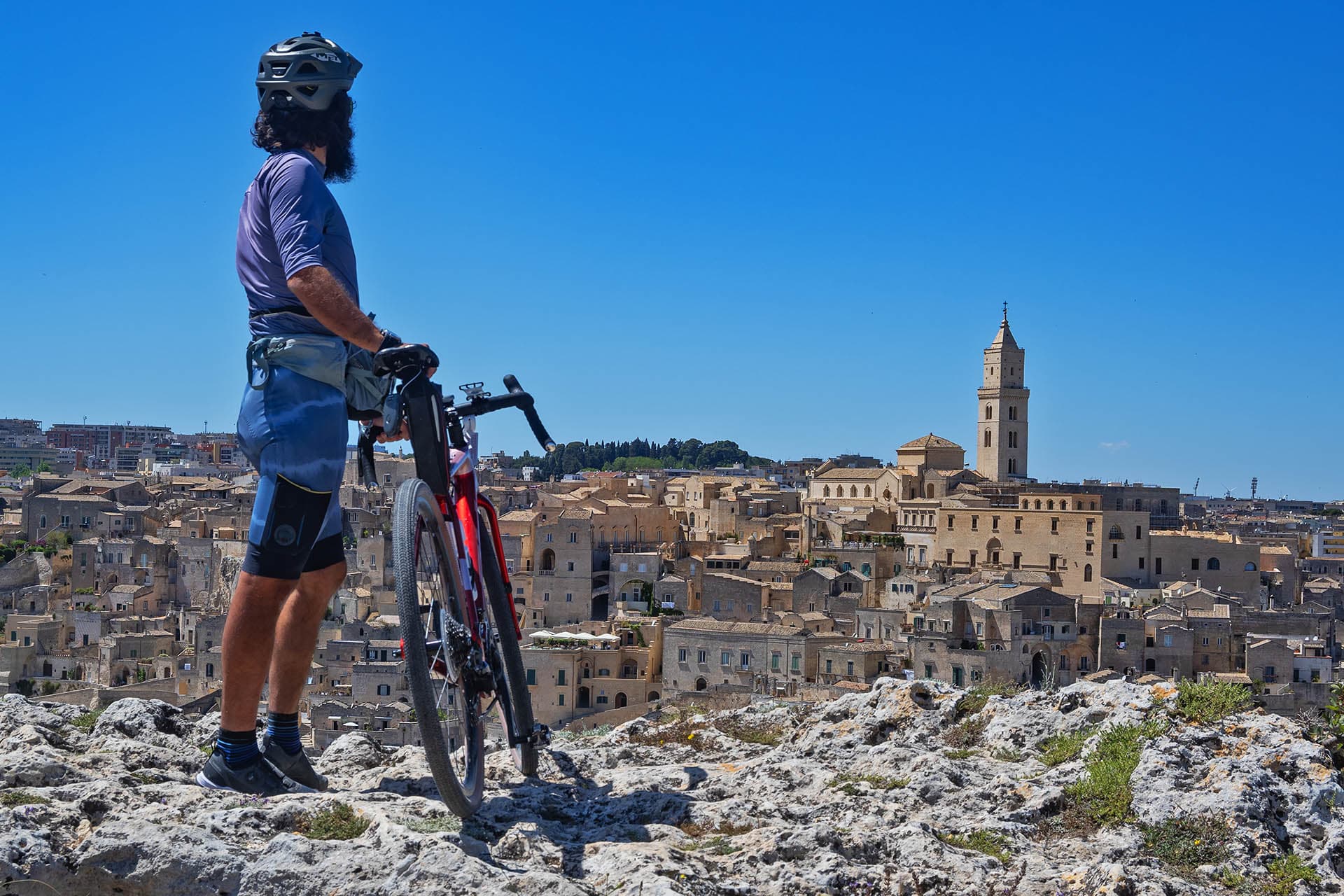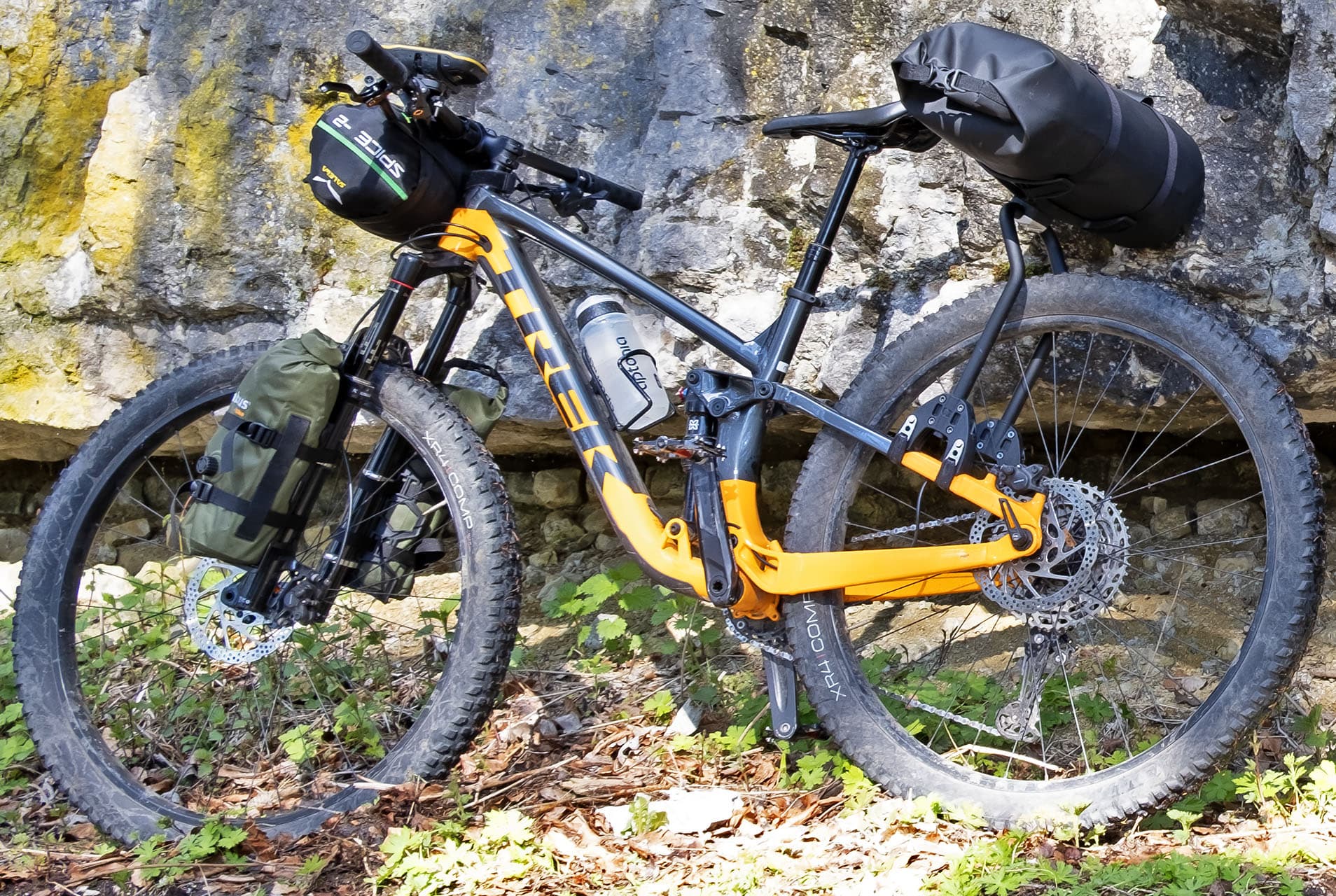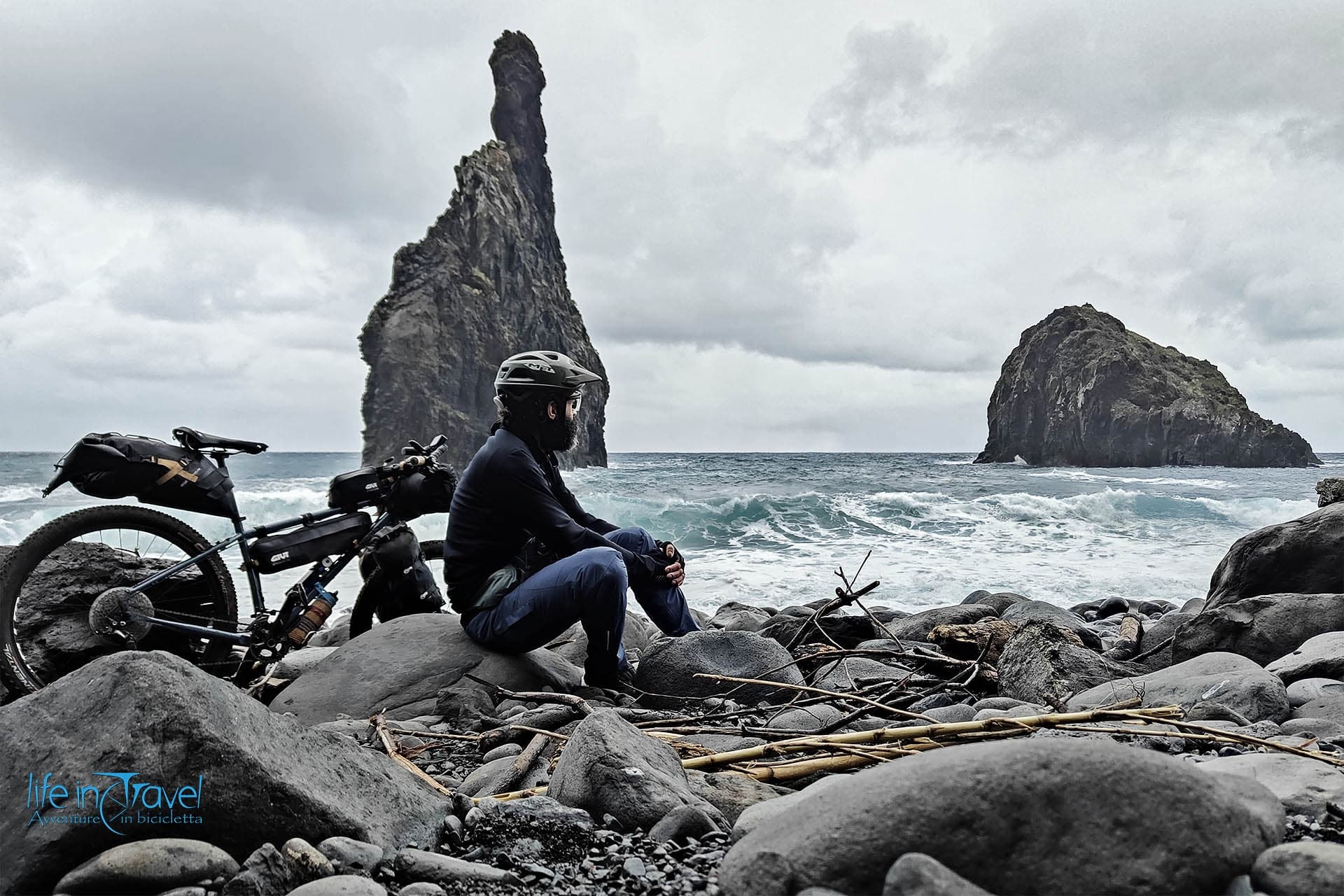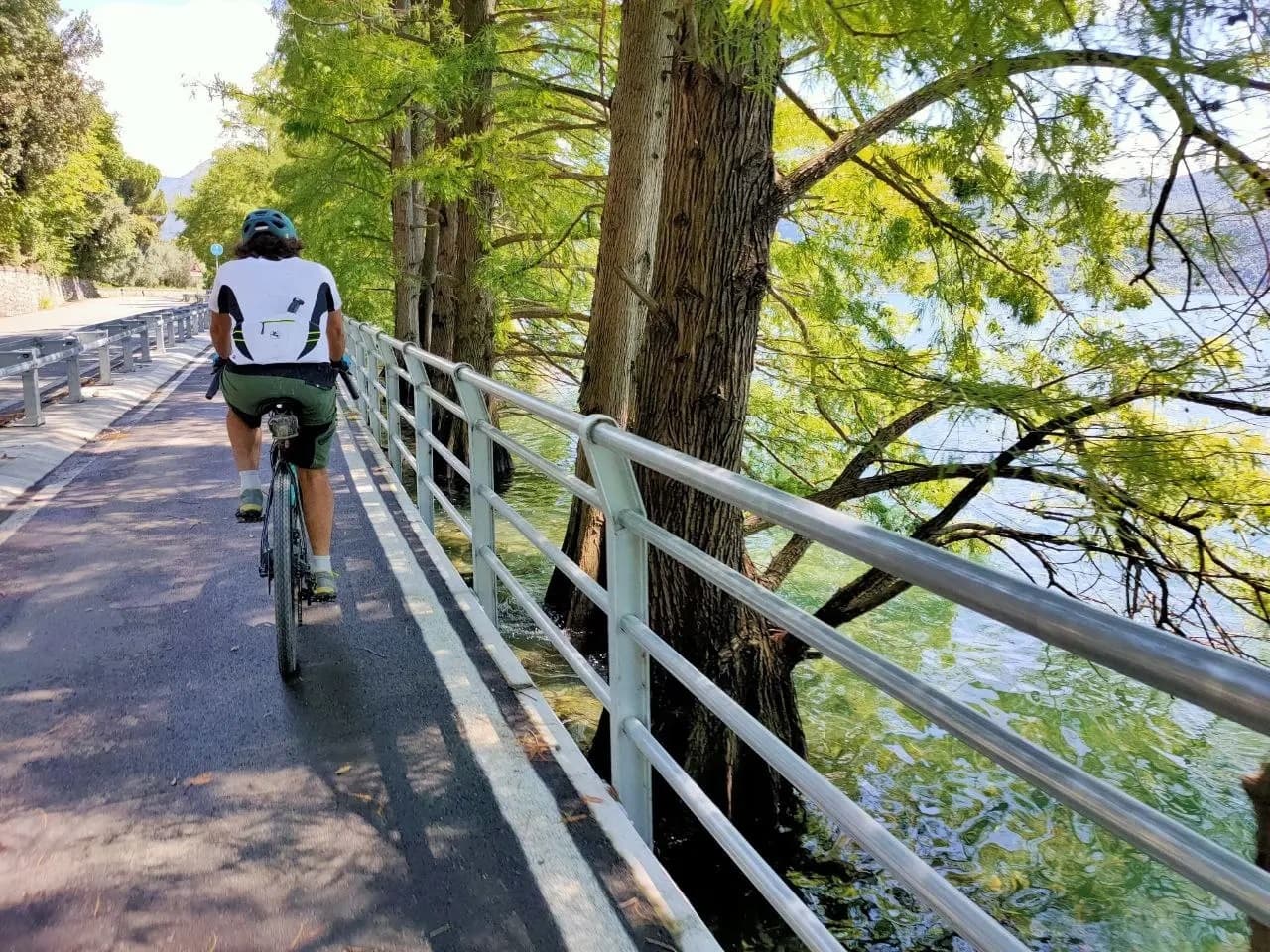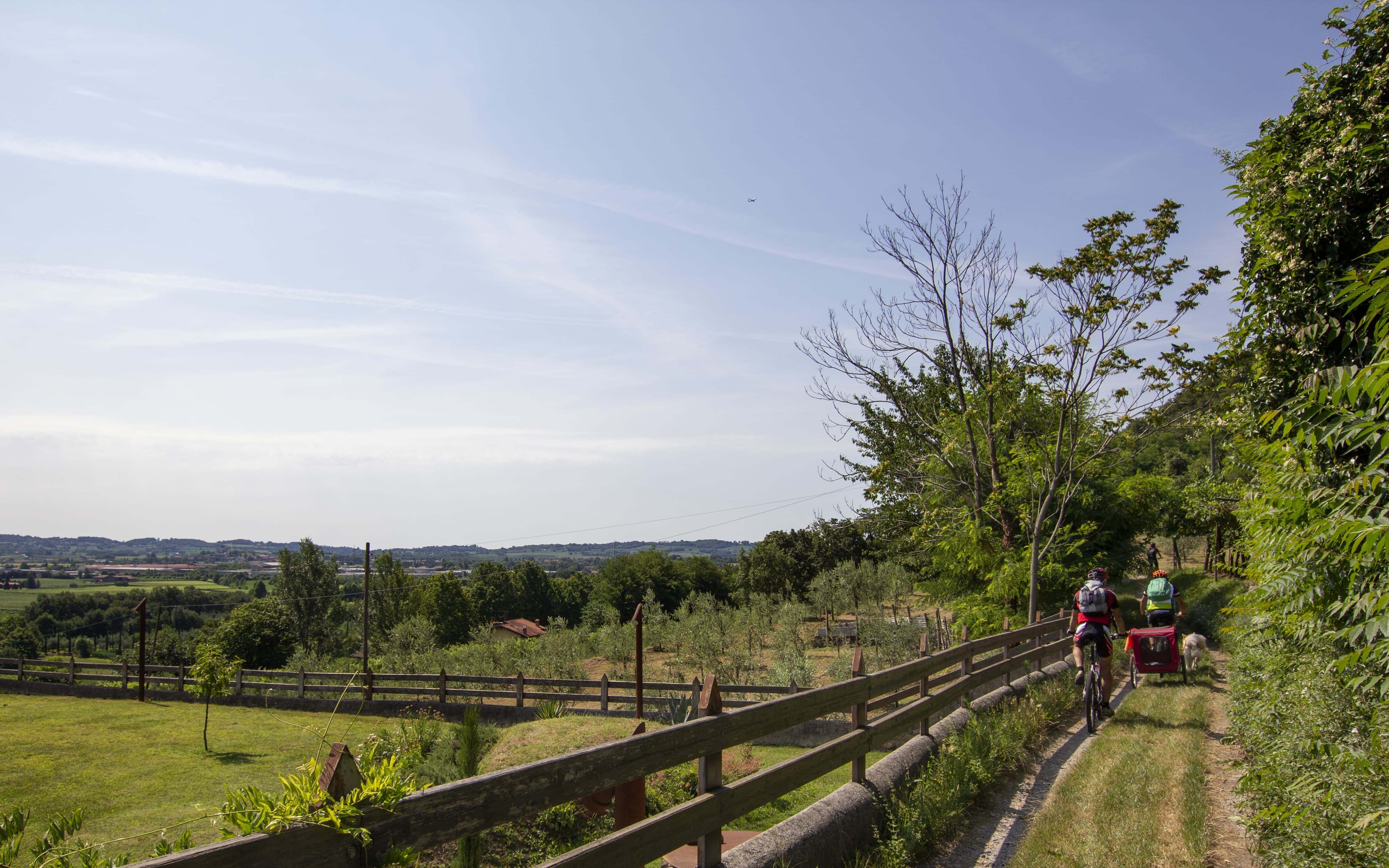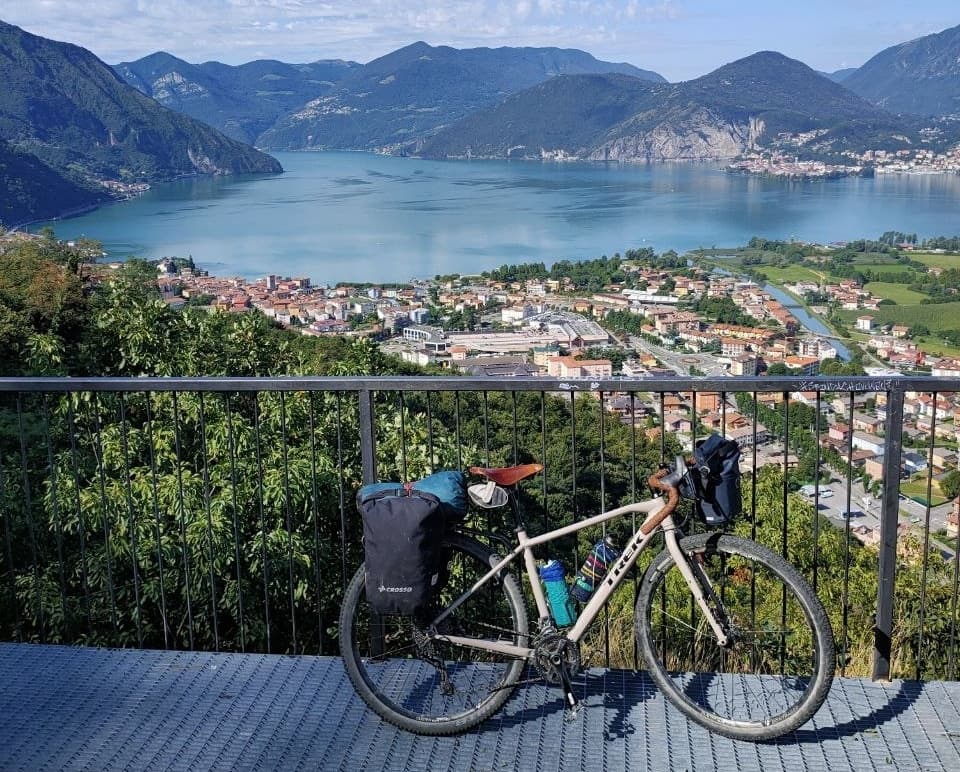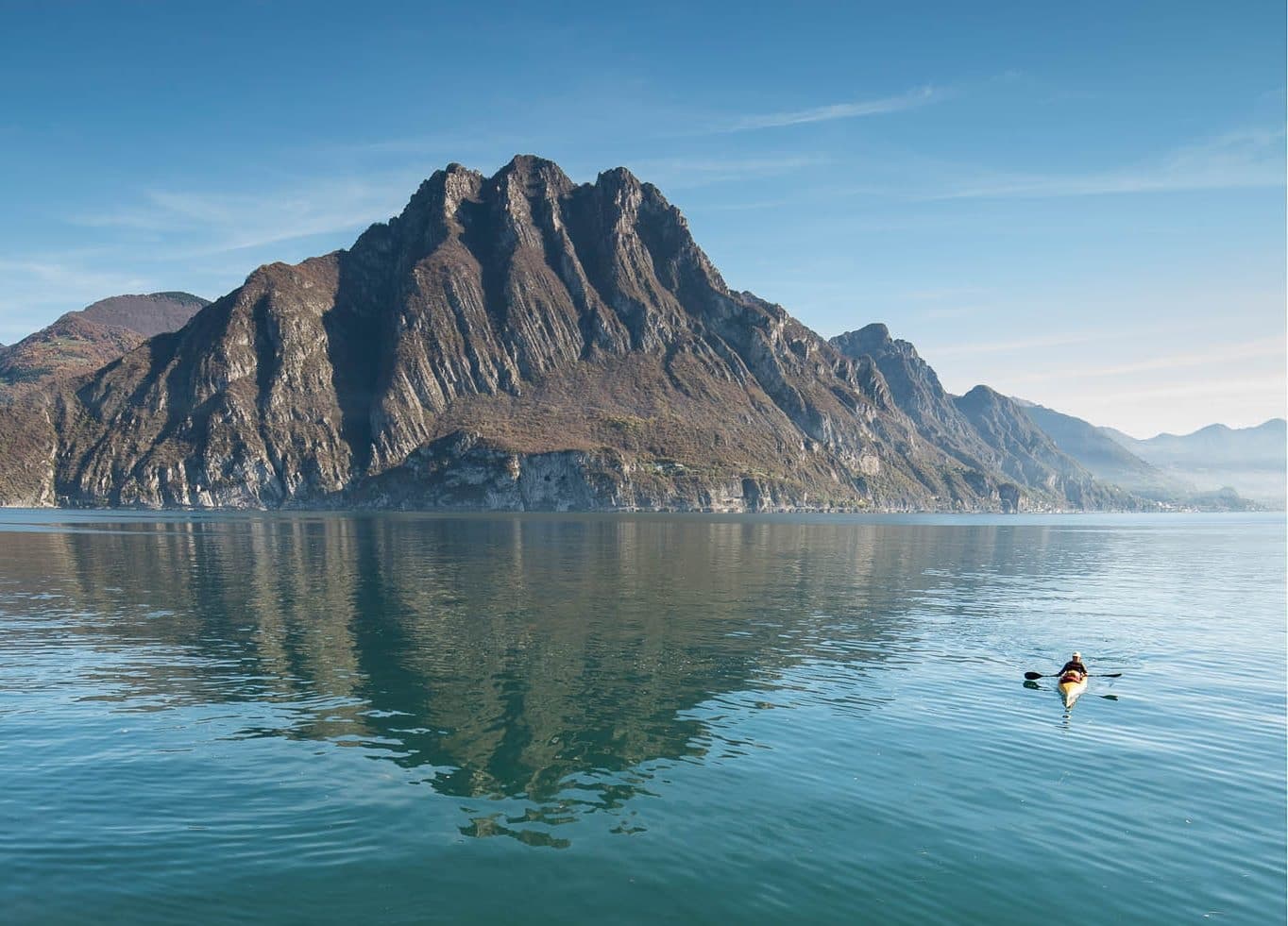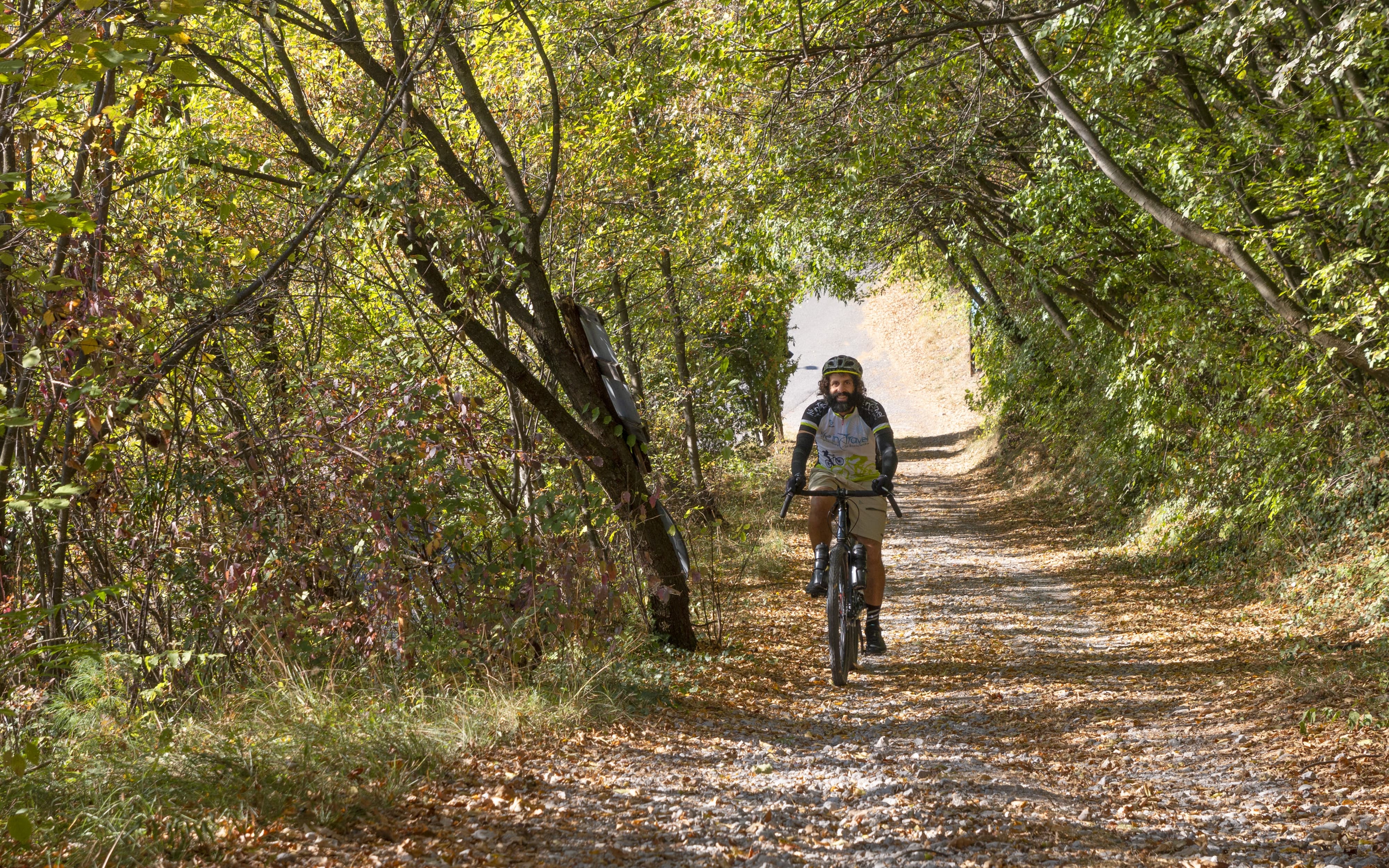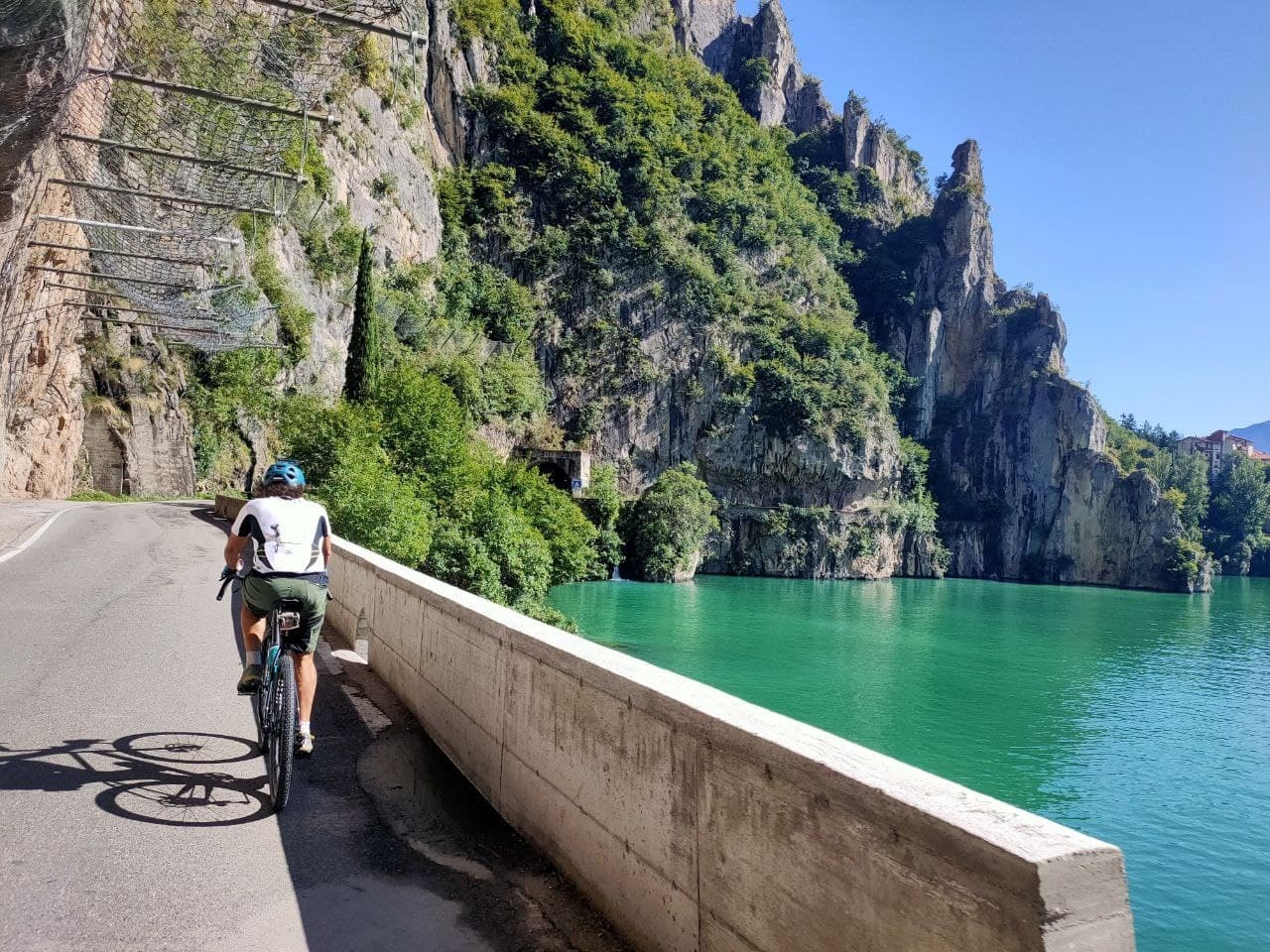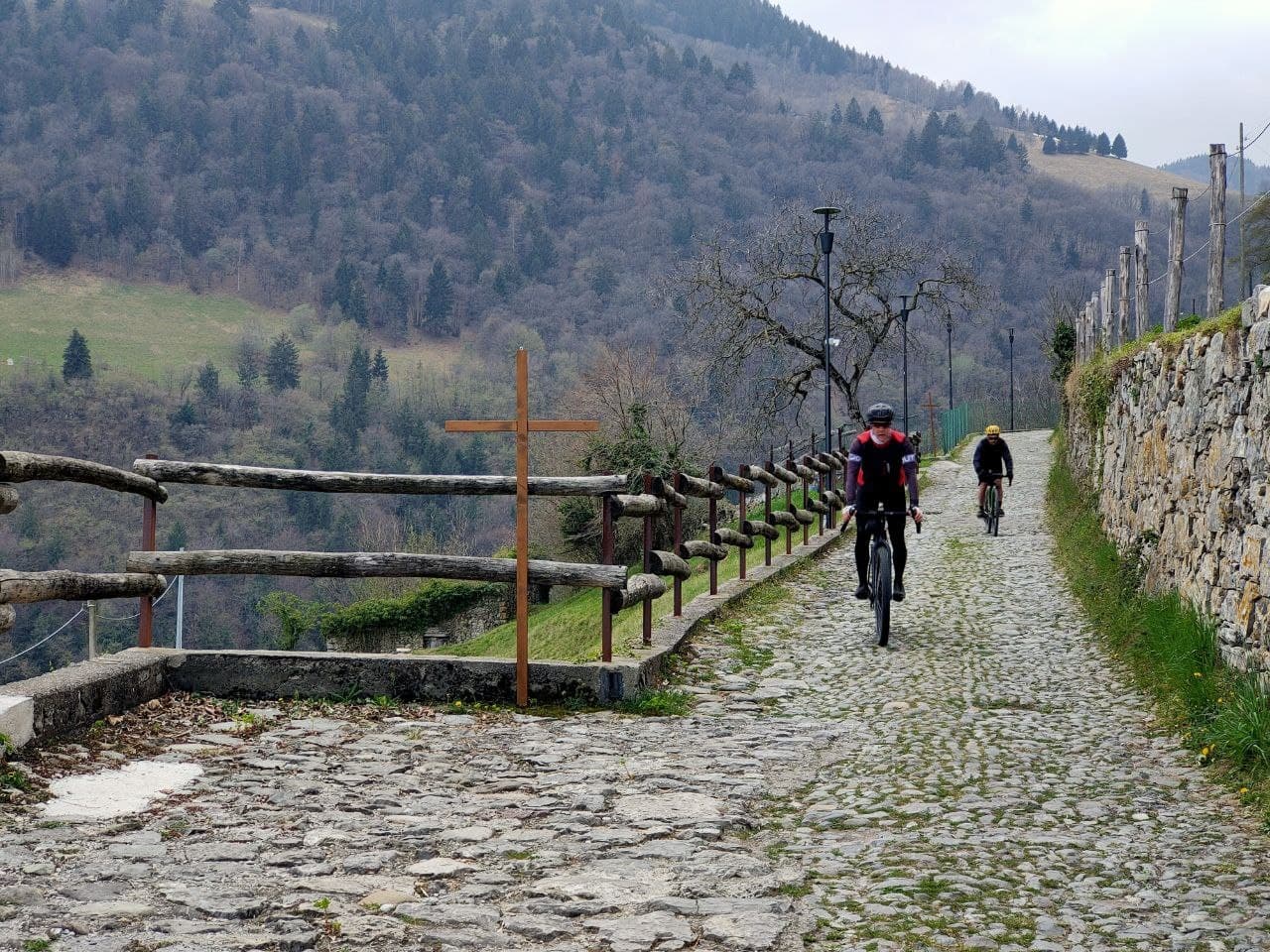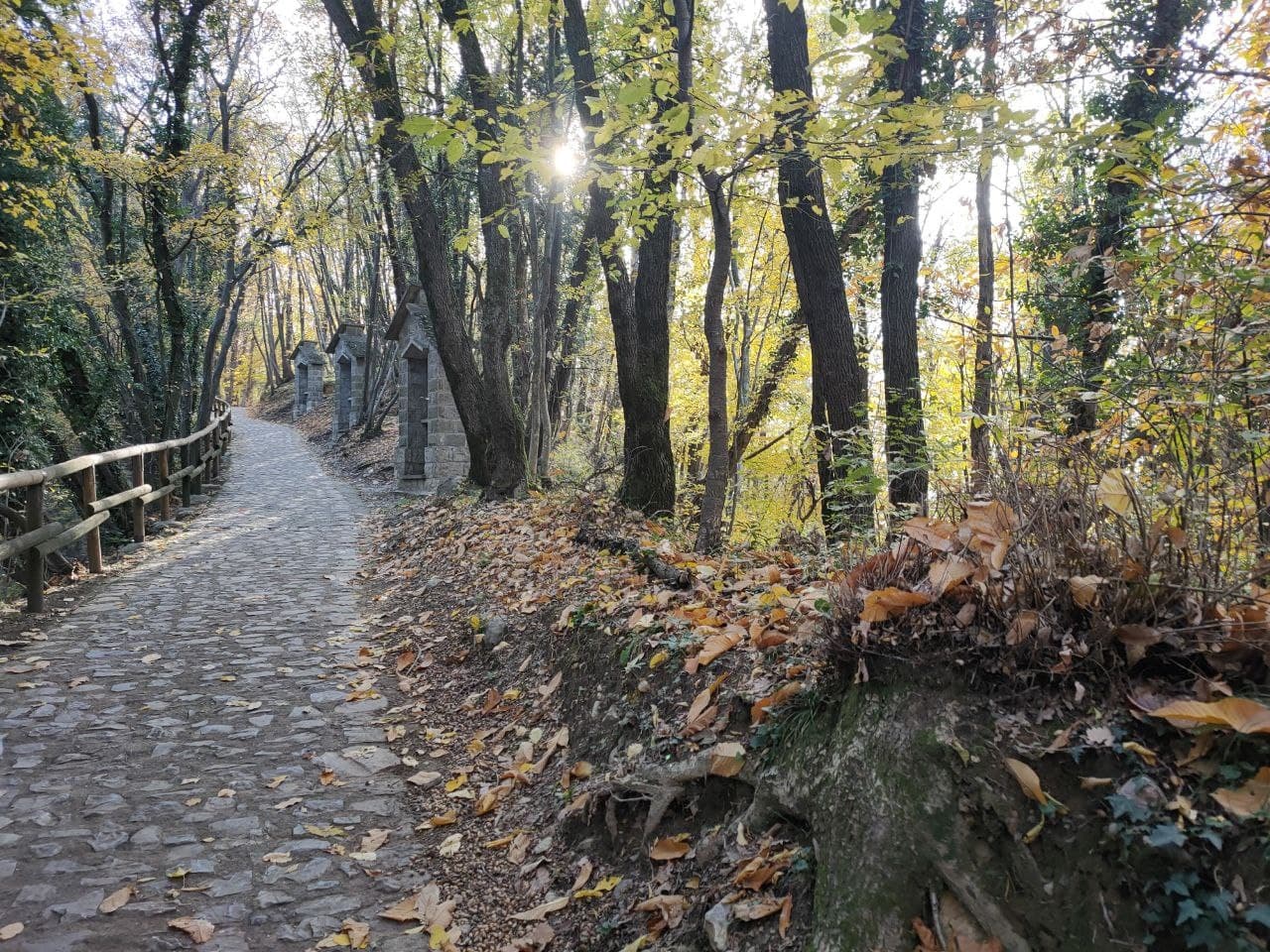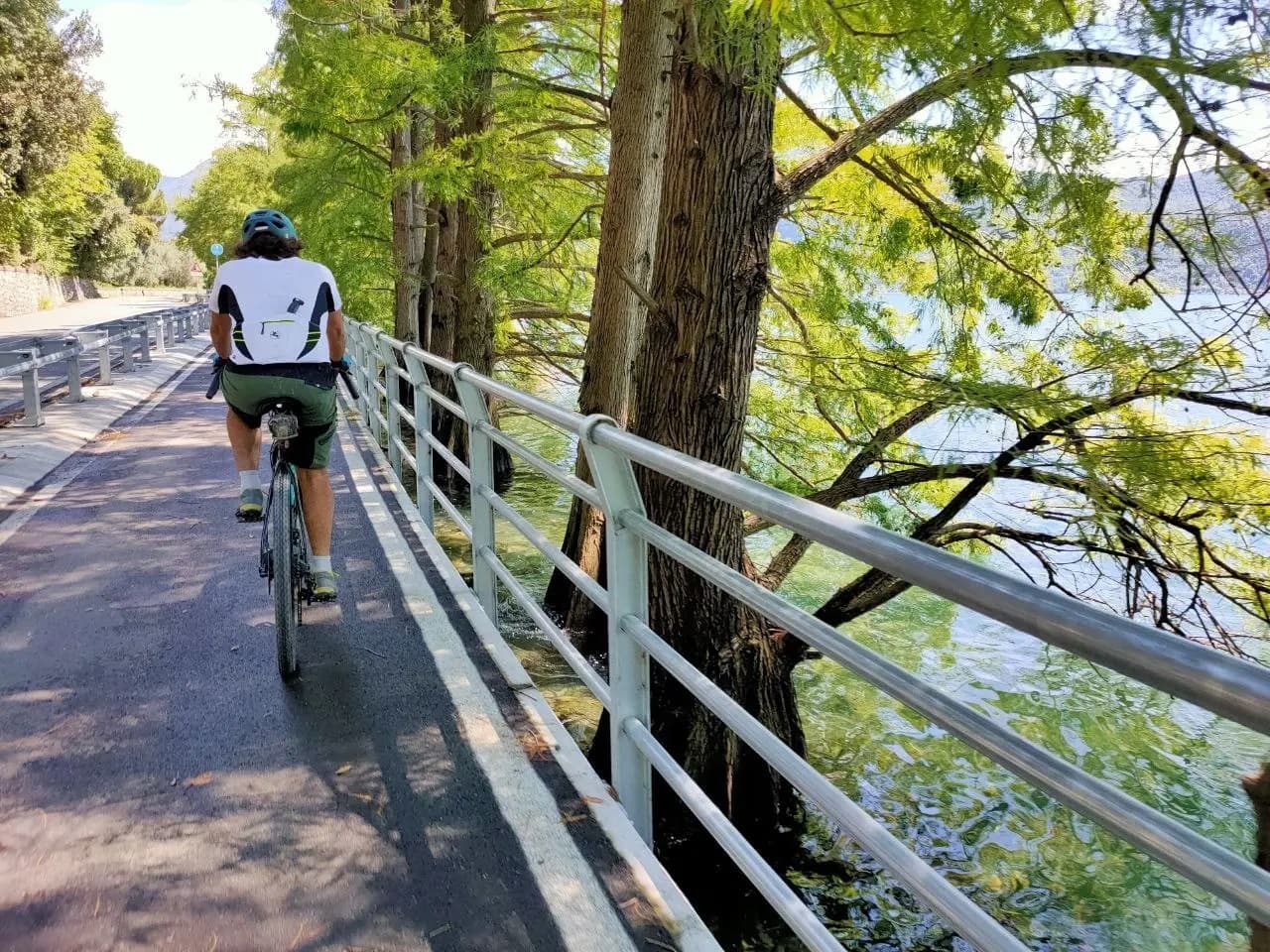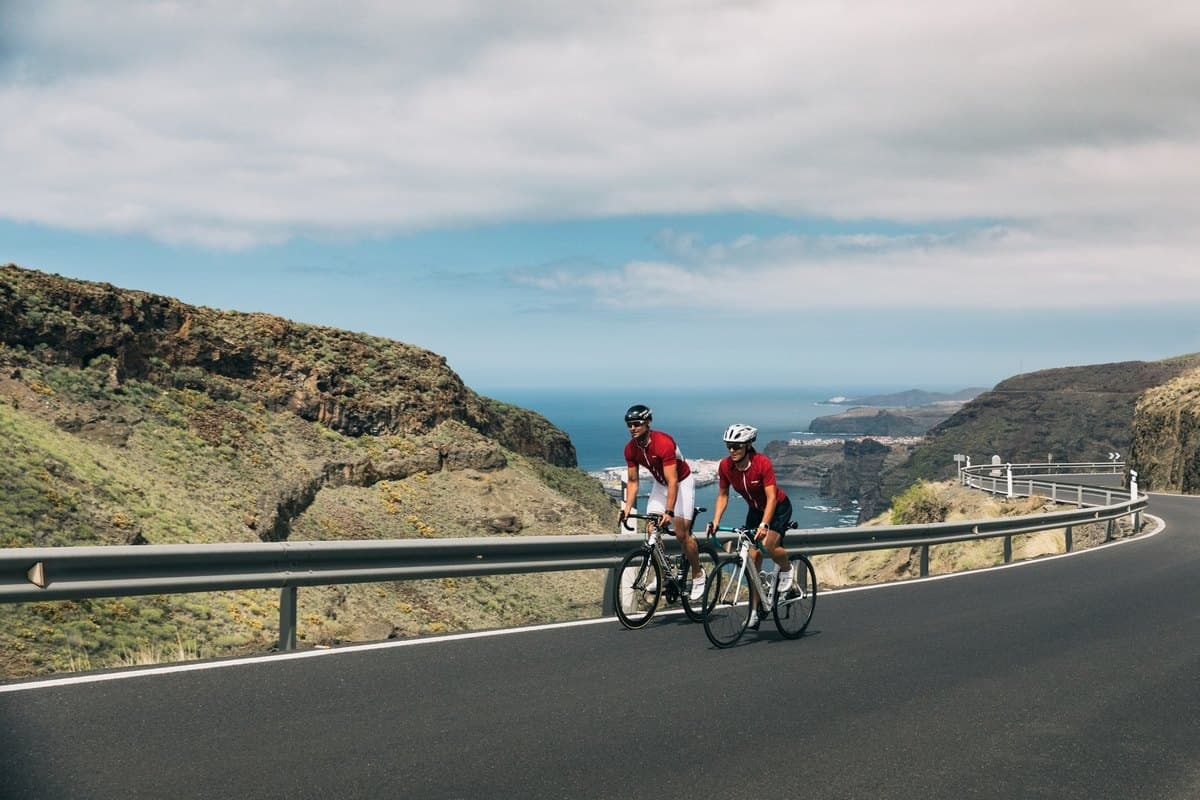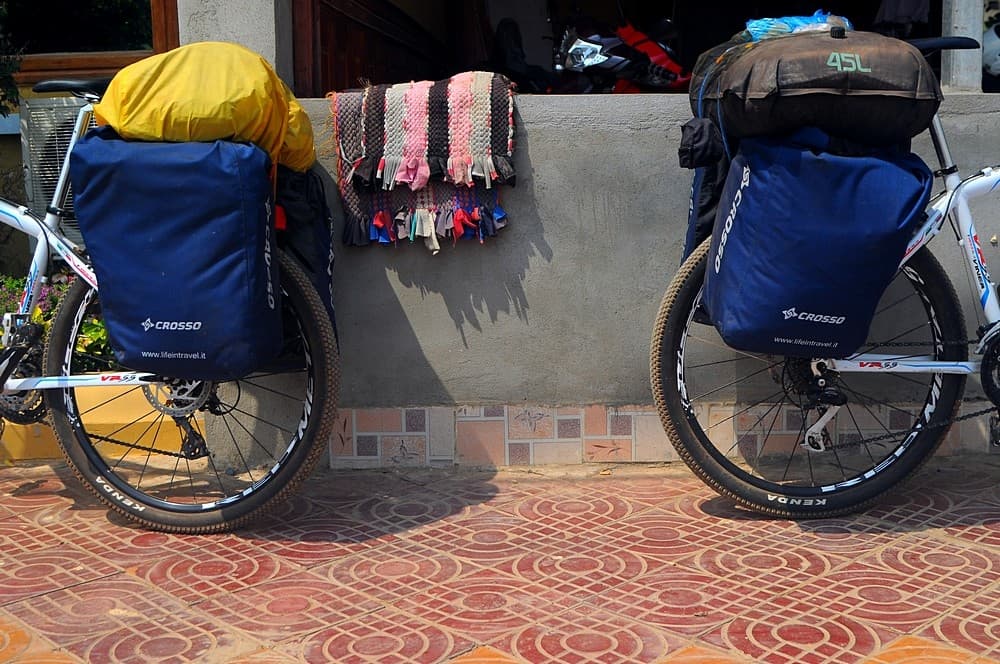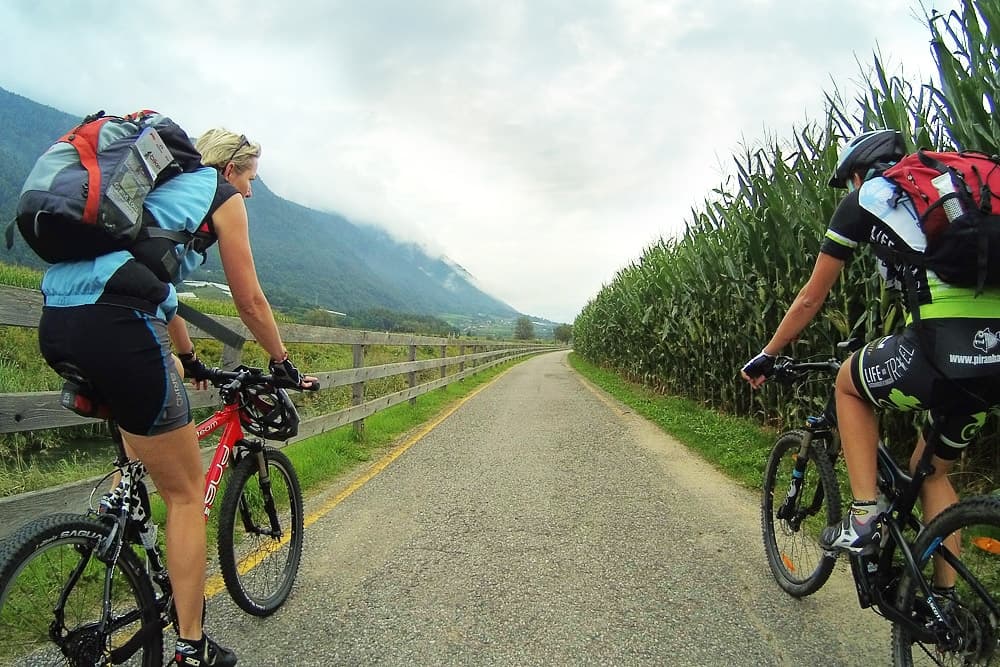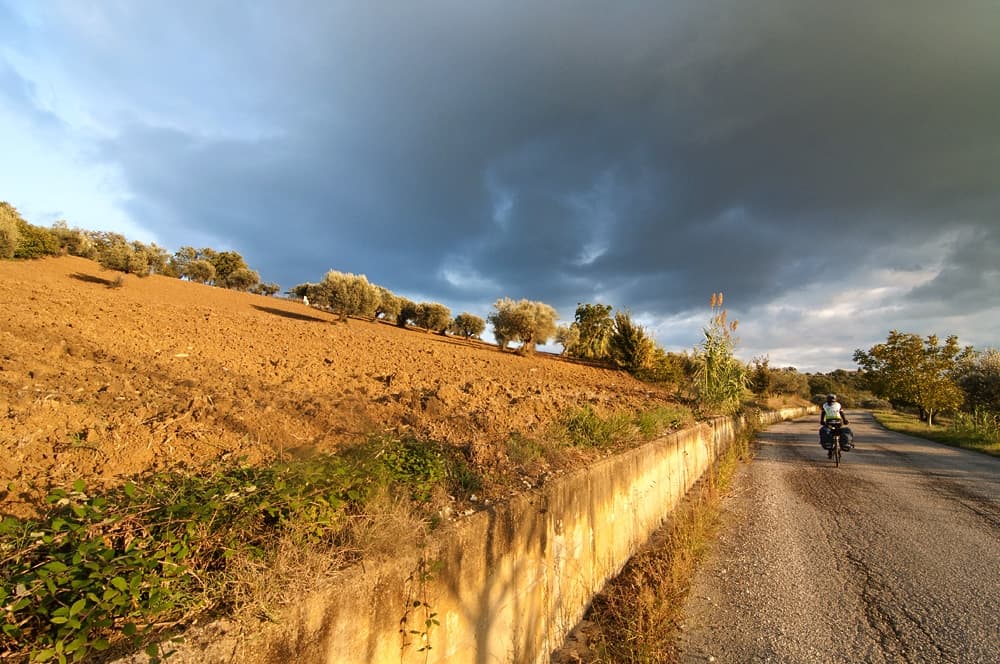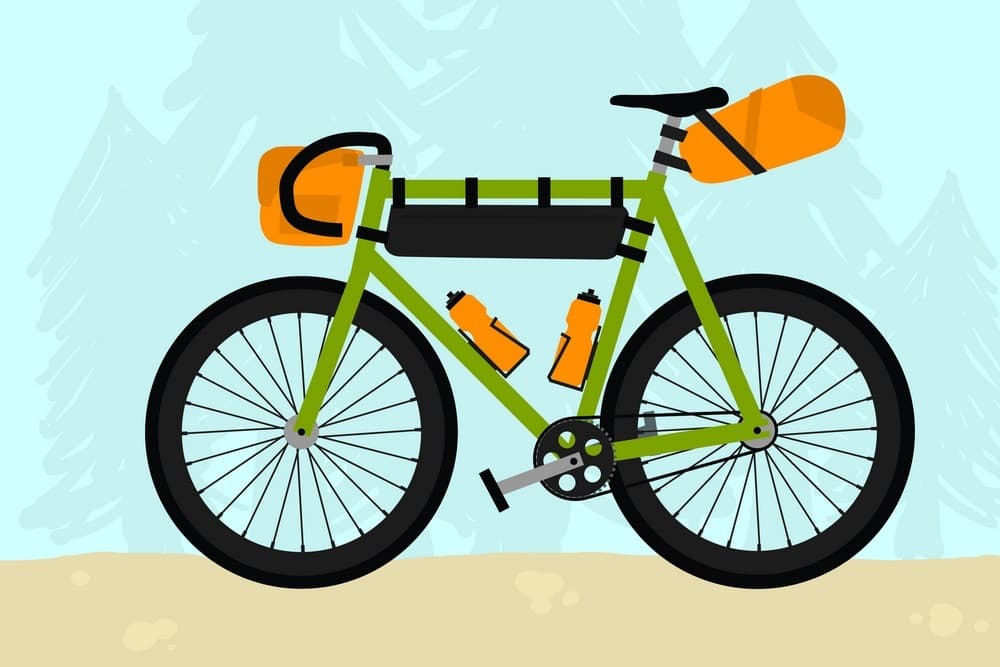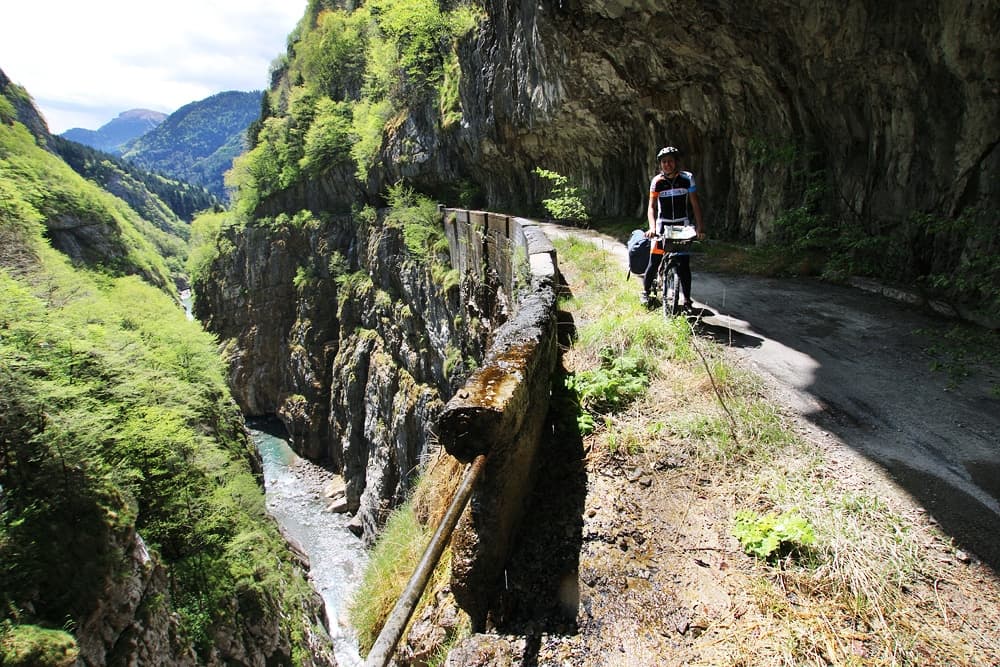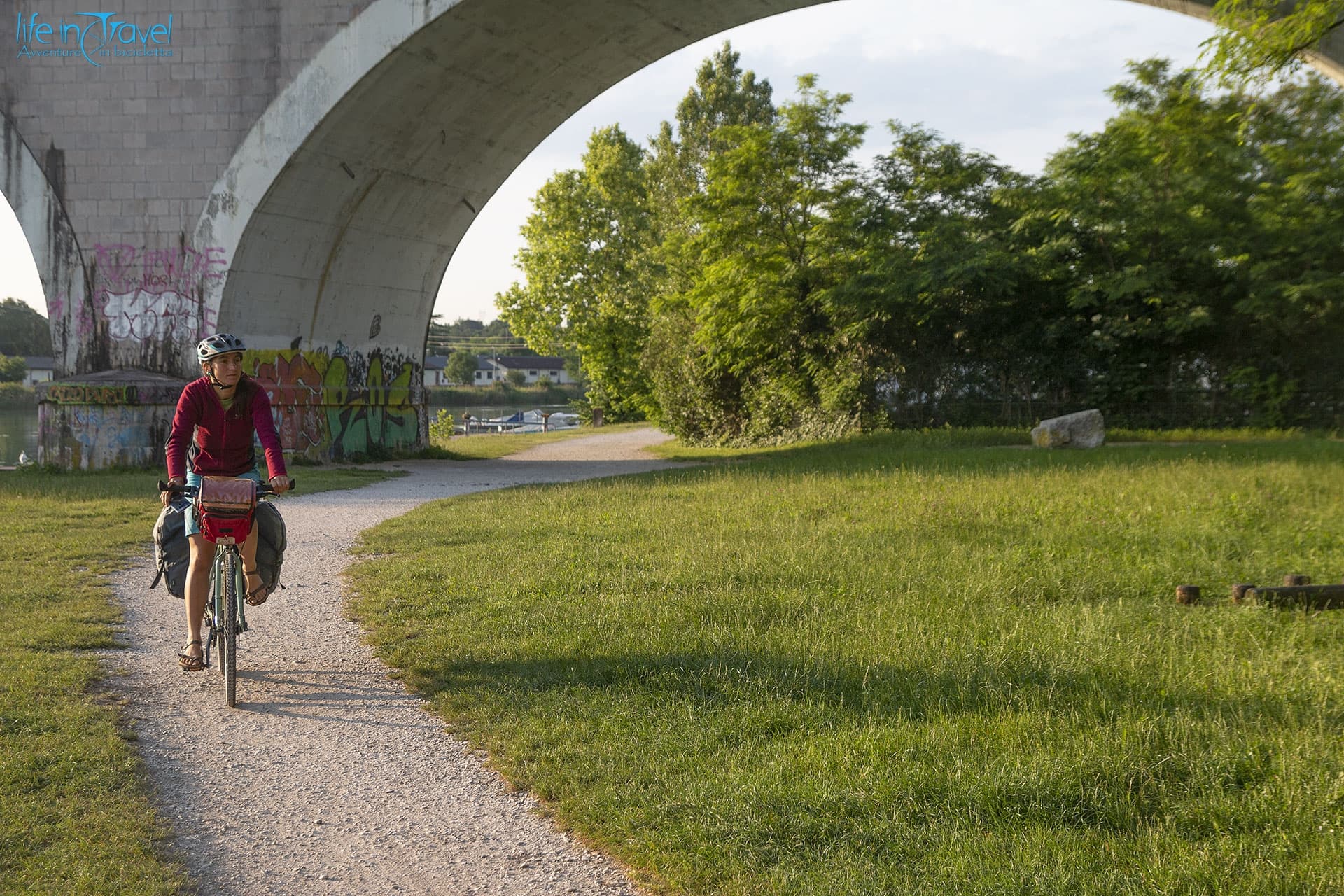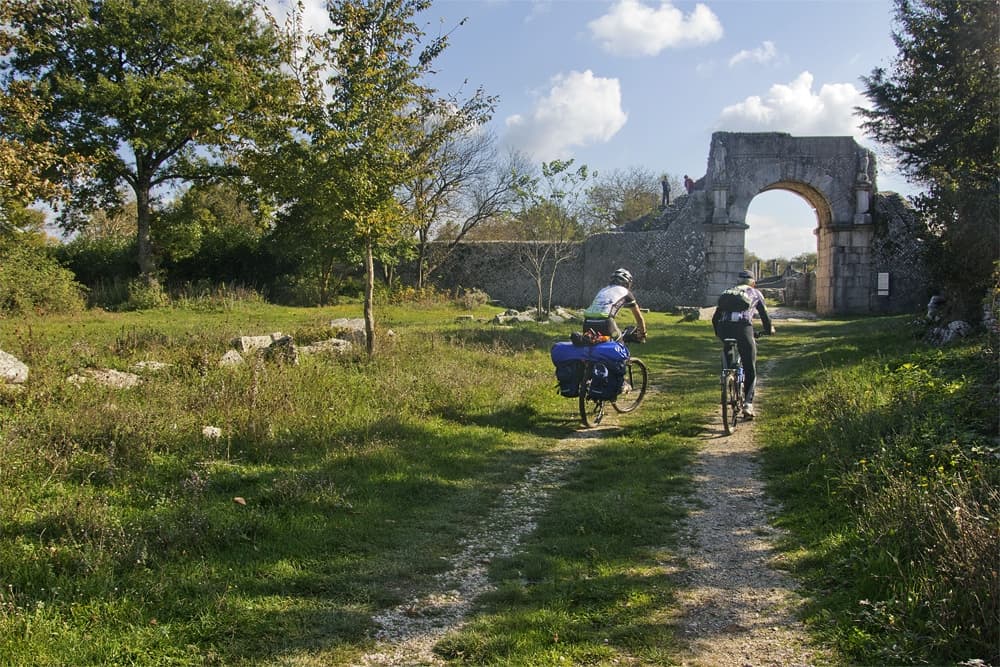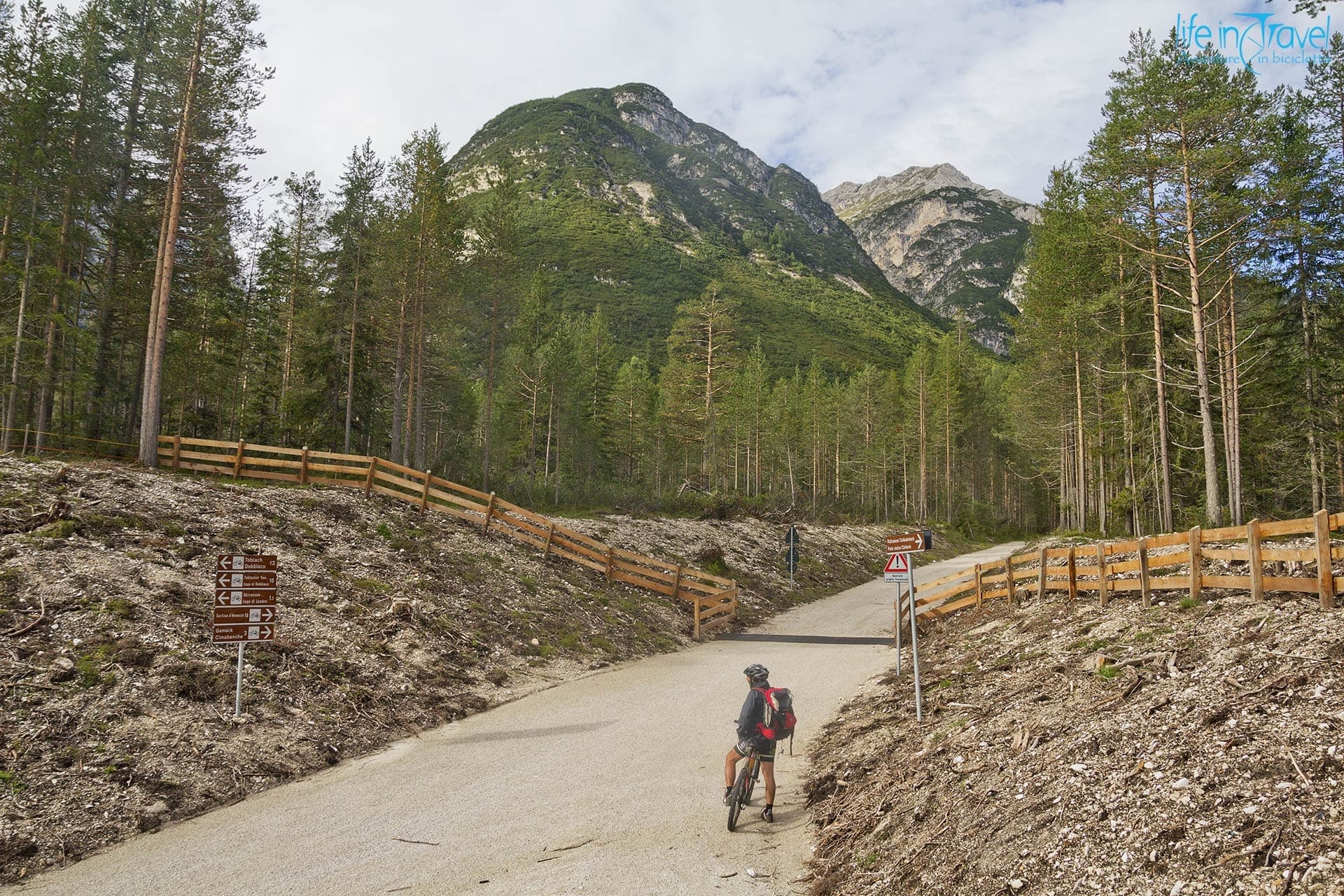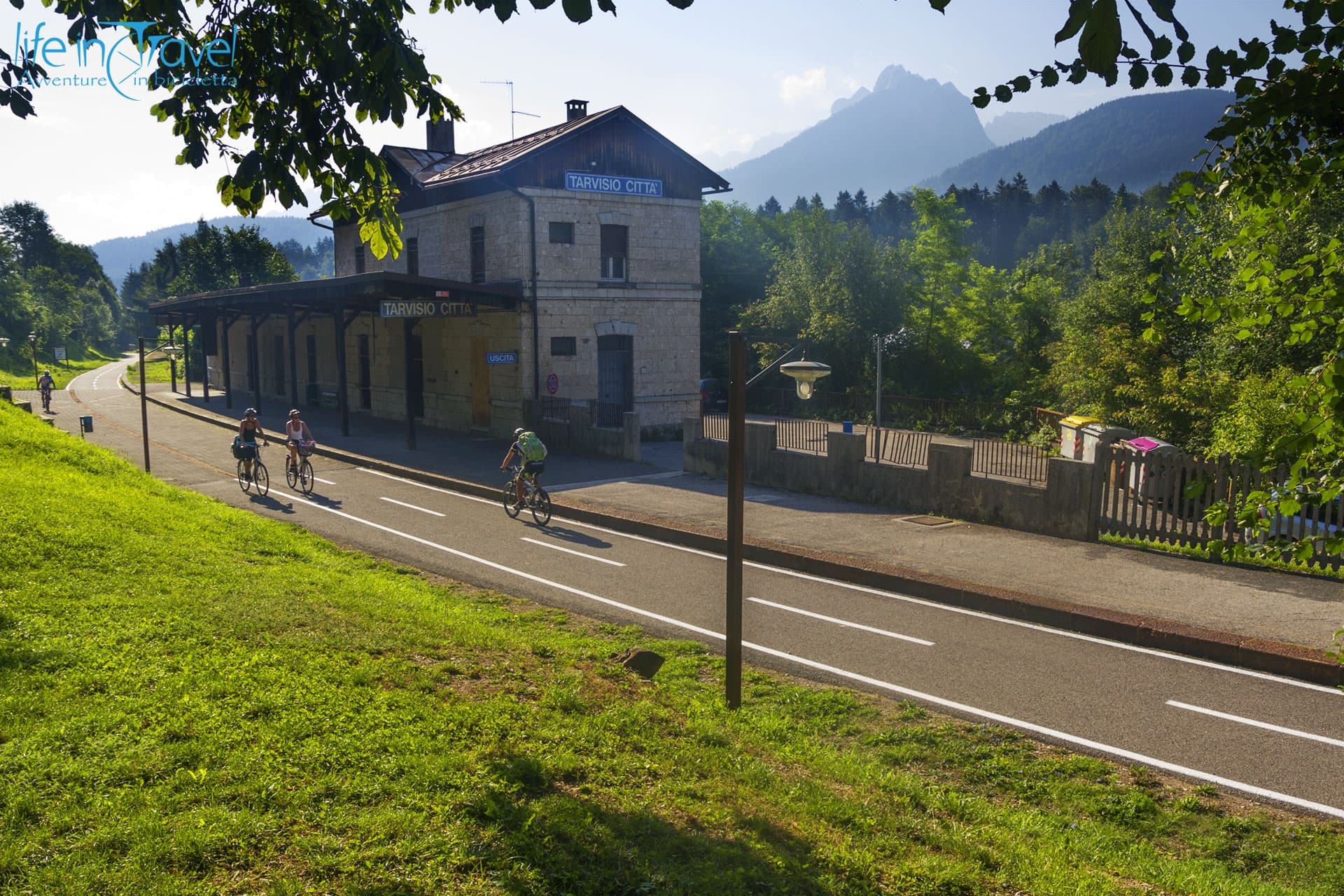Pusteria Valley cycle path is one of the main roads of the cycling-tourist itineraries in South Tyrol. The trail connects San Candido to Fortezza in about 70 km of an average demanding route. Unlikely the San Candido – Lienz cycle path developing exclusively downhill (going from Italy to Austria), cycling towards Fortezza requires anyway a minimum training because overall you have to face about 700 meters of difference in altitude.
By bicycle under the Sexten Dolomites
From the station of San Candido you immediately follow the signs of Pusteria Valley cycle path to Dobbiaco. The view on the Sexten Dolomites fills in your lungs with fresh air and the slight slope pushes the cycling travelers on the clean asphalt of the cycle path. Just a few kilometers and you reach the station of Dobbiaco in front of which the picturesque Grand Hotel overlooks, nowadays turned into a visit center of the South Tyrol nature parks. From the station you can easily reach the town center with a short detour on the right, maybe to drink a coffee or get a supply of food. In Dobbiaco you meet also the crossroads to travel the Dolomites cycleway (Long Dolomites Way) that follows the old railway track to Cortina d'Ampezzo, Cimabanche Pass and the area of Cadore. 

ValPusteria cycleway continues on the valley floor meeting the link road to Santa Maria and proceeding towards the small village of Villabassa. You cycle safely in a mountainous territory of incredible beauty and austerity. This area of the Upper Pusteria Valley is a touristy place all year long but especially in summer and winter hikers and skiers invade the resorts therefore, if you have the possibility, travel this cycle path in low season, maybe in autumn enjoying the colors of the woods or in spring breathing the perfume of blossoming.
Villabassa and Frau Emma
 Frau Emma was the first woman who registered to the German Alpine Club, pioneer of the alpine tourism and famous hotel manager. The legends goes that she was known in every alpine region and that to send her a letter it was enough to write on the envelope “Frau Emma” in Europe. Leaving Villabassa and the main road dedicated right to Mrs Emerentiana, you get in a rush to the crossroads to the lake Braies and its cycling track we partly traveled during our two days in the nature park of Fanes, Sennes and Braies by MTB. Soon you find yourself cycling for a pleasant stretch in the woods alternating the freshness of vegetation and unexpected, majestic glimpses of the mountains delimiting the valley.
Frau Emma was the first woman who registered to the German Alpine Club, pioneer of the alpine tourism and famous hotel manager. The legends goes that she was known in every alpine region and that to send her a letter it was enough to write on the envelope “Frau Emma” in Europe. Leaving Villabassa and the main road dedicated right to Mrs Emerentiana, you get in a rush to the crossroads to the lake Braies and its cycling track we partly traveled during our two days in the nature park of Fanes, Sennes and Braies by MTB. Soon you find yourself cycling for a pleasant stretch in the woods alternating the freshness of vegetation and unexpected, majestic glimpses of the mountains delimiting the valley.Cycle tourism in the Pusteria Valley
Before reaching any inhabited center in the valley you run into the illustrative panel about the resort and the attractions of the Pusteria cycle route where you are. A map and the list of the services available are useful for the cycling-traveler to orient yourself along the cycling itinerary and, why not, to discover interesting, little known cultural, historical and naturalistic sites. The panels are identified by the word “Pusterbike” and are clearly visible along the route. 

Val Pusteria cycleway continues flanking Monguelfo, starting point of the Casies Valley cycle path venturing into the valley with the same name. Short dirt stretches, easy and feasible also with bikes with a trolley or families with children, alternate to the asphalt crossing the Rienzau biotope and reaching the small lake of Valdaora. The cycling shore of this artificial lake is really a cure-all for body and mind with its red and yellow trees in autumn, the shade given by the branches in summer, the glimpses in blossom in spring...

Slightly uphill you find yourself to cycle speedily to Valdaora di Sopra where you can decide whether to take the panoramic road to Brunico or continue to follow the indications of the cycle path towards the main center of the Pusteria Valley (in Brunico the two roads meet again).
From Valdaora the Val Pusteria cycleway climbs softly and then turns into a simple dirt road close to Perca. You follow constantly the course of the Rienza, the main river of the Pusteria Valley that flows to the Isarco Valley. Just after the small village of Perca a short slope leads to the old railway track, now suitable for cycling, to Brunico: two suggestive galleries follow each other in the silence of this valley corner ending right along the river course, a few steps away from the town.
Brunico, the heart of the valley
You find yourself at the entrance of Brunico, Bruneck in German, 16000 inhabitants and a history almost a thousand years long. The historical center characterized by three access gates, colored buildings and houses with protruding windows has kept its medieval appearance. Above the historical center also the Bruneck Castle, that belongs to the Messner Mountain Museum and dates back to the 1251, rises up. 

I suggest that you spend at least one day in Brunico to visit the most characteristic places, trying some specialties and walking among the alleys of the center breathing the mountain air. Starting right from the town you can decide to travel the road, later cycle path, reaching Campo Tures and its majestic castle and the amazing Aurina Valley with its mountains bordering Austria.

Pusteria Valley cycle path leaves slowly also Brunico, following with obstinacy the Rienza flowing to the west. In the main square of San Lorenzo di Sebato, at a short bike ride from Bruneck, enthusiasts cannot miss a visit to the Mansio Sebatum Archaeological Museum dedicated to the Iron age and Roman age in South Tyrol. Exiting the village the itinerary detours a bit heading to the Badia Valley and climbing a hill with a short but resolved climb. You distance yourself for a few kilometers from the Rienza but its place is soon taken by the stream Gader (or Gadera). The mountains in dolostone and the castles of the area that characterize the place draw attention constantly and it is inevitable to stop to take a few pictures. 

Close to the biotope of Raggimoos the cycle path goes into the woods, sheltered from the sun that in full summer bothers pedaling but that in winter conveys an incredible sense of pleasure. A few meters with a gradient slope of 12% give a hard time to those who have excessively relaxed before arriving to Chienes, a village surmounted by the peaks of the Rieserferner- Ahrn Nature Park. Chienes only has 2500 inhabitants but in its municipality rises up the Casteldarne Castle that was inhabited for more than 700 years by the same family, the counts Künigl.
Towards the end of Val Pusteria
The cycleway, which again runs parallel to the Rienza, goes down towards Vandoies di Sotto crossing small villages, a biotope and a suggestive bridge covered in wood. One of the monuments of the Pusteria Valley that characterizes this cycling itinerary is undoubtedly the sluice located just beyond the village which attributes its name to it, Rio Pusteria. Before the Rienza becomes part of the river Isarco, there is the Chiusa of Rio Pusteria that marked the valley to the west. Still well preserved, it is on top of the Pusteria cycle path with its imposing walls and the fortified tower. In 1809, when it was conquered, not without losses, by the French, the sluice was abandoned and slowly went to ruins. Nowadays it’s back to life again, it can be visited together with a guide and sometimes houses also cultural events and shows. 

Shortly before the entrance in Rio di Pusteria the cycle path, which also belongs to the Friendship Cycle Way, the itinerary connecting Munich to Venice, starts to climb bypassing the village and offering evocative views on the suburb below. You quickly approach Fortezza which it’s only a few kilometers away. The Austro-Hungarian fort of Fortezza appears around the corner, proud and perfectly preserved. Dating back to early 1800, this military facility lies upstream of the river Isarco at an altitude of 750 m. The fortress in its complexity is made up of three levels: the lower fort, the medium fort and the higher fort. The lower and higher fort are connected by 451 steps that can be walked during the visit.
The fort of Fortezza is one of those historical monuments that are worth a visit while practicing cycling-tourism, maybe after crossing it riding a bike along the cycle trail which passes within. Voices more or less historical report that during WWII a huge amount of Italian gold was transported from Milan to the fort by the Germans, just before reaching Berlin and the Swiss banks; the exact amount is unknown but they talk of about tens of tons of yellow metal. 

Fortezza is the point of arrival of Val Pusteria cycleway that here connects to Vipiteno (and the Brenner...) or Bressanone (and then Bolzano, Merano, Trento...) through the cycle path of the Isarco Valley. At the station in the village it’s possible to make use of the bike transport service on the train: travelling with Trenitalia the daily cost is of 3,5€ (unless the purchased segment has a lower cost than the bike supplement. In this case also the bicycle will cost the same price of the (paid) rate while with Sad, the provincial transport company of South Tyrol, each bicycle pays 7€.
To get further information about the Pusteria Valley cycleway and more you can connect to the official tourism website or, if you want to cycle another cycle path, we suggest that of the Passiria Valley!

